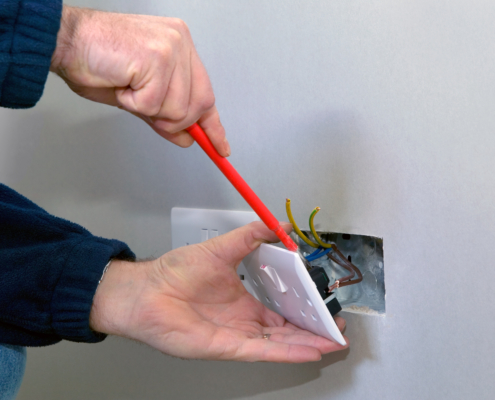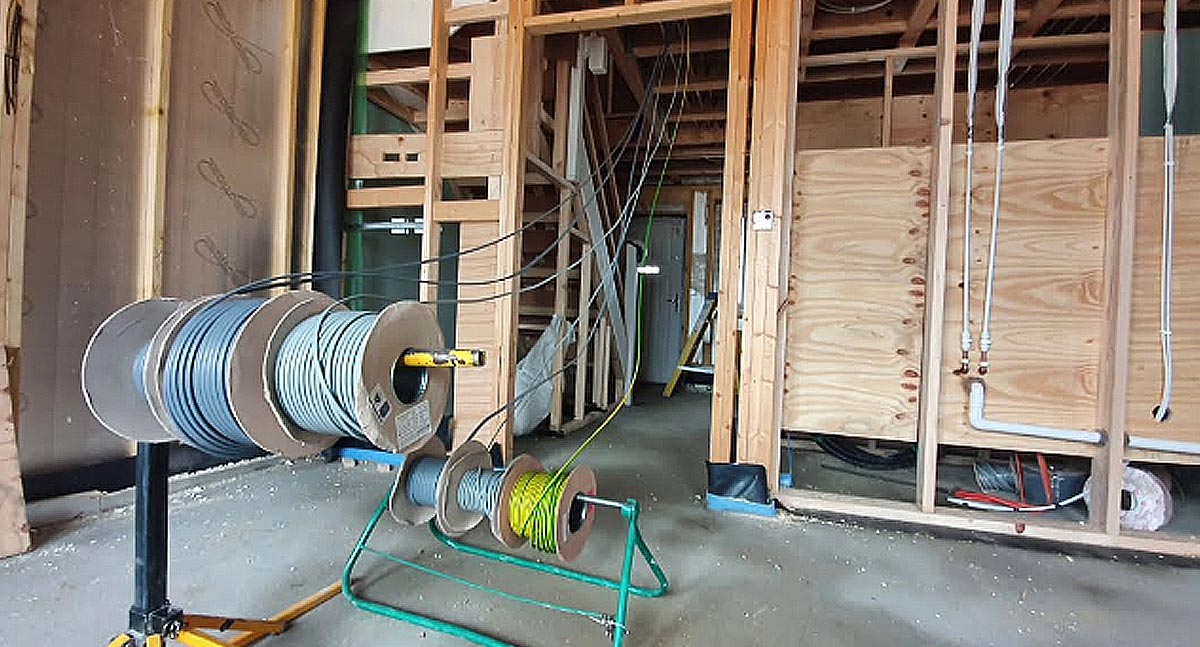Depend On BRE Electrical Melbourne for High-Quality Electrical Services
Depend On BRE Electrical Melbourne for High-Quality Electrical Services
Blog Article
The Ultimate Overview to Electrical Installation: Tips and Techniques for a Safe and Reliable Home Wiring System
In the realm of home upkeep, couple of facets are as essential yet commonly forgotten as the electric wiring system. By checking out the nuances of electrical security steps and energy-saving practices, this comprehensive overview will drop light on the ins and outs of home electrical wiring, equipping individuals to take charge of their household's electrical framework.
Recognizing Electrical Precaution
To ensure the safety of both people and property, understanding and applying appropriate electric precaution is vital in any type of home circuitry job. Electrical energy is an effective force that can be hazardous otherwise managed with caution. Among the fundamental precaution is ensuring that all electric work is done by qualified professionals that follow neighborhood building ordinance and regulations. It is essential to perform a detailed assessment of the electrical system prior to beginning any type of wiring job to identify prospective hazards or problems that need to be resolved.
In addition, using the suitable devices and tools is essential for keeping safety during electrical setups. Protected handwear covers, voltage testers, and protective eyewear are a few of the fundamental security equipment that ought to be put on to stop electrical shocks or accidents. It is also essential to de-energize circuits prior to working with them and to classify all circuits and breakers plainly to stay clear of complication.

Important Tools for Home Circuitry
Guaranteeing the appropriate implementation of electric security actions in home wiring projects includes using a particular collection of crucial tools designed to help with the setup process properly and securely. Some of the secret devices needed for home circuitry jobs consist of a voltage tester for examining real-time cords, cord pole dancers for getting rid of insulation from cords, a cord cutter for specifically reducing cables to size, a screwdriver established for protecting electrical components, electrical tape for insulation and securing links, a wire ripper for stripping wire sheathing, and a multimeter for gauging voltage, existing, and resistance.
Step-by-Step Electrical Installation Guide
Starting an electrical installation task needs careful planning and adherence to security guidelines. Prior to starting any type of work, guarantee you have a detailed strategy detailing the design of the electrical system, consisting of the positioning of electrical outlets, switches, and components. Consider the power demands of each device to determine the appropriate cord scale and circuit breaker dimensions.
The very first step in the installment procedure is to shut down the power supply to the location where you will certainly be functioning. Use a voltage tester to validate that the circuits are de-energized before touching any kind of cables. Next, meticulously get rid of existing fixtures or electrical outlets and detach the wires.
When setting up brand-new electrical wiring, run wires through wall surfaces and ceilings, securing them in position with suitable installations. Adhere to regional building regulations and manufacturer directions for appropriate wire setup and links. BRE Electrical Solutions. Make certain to classify cables for easy identification and future upkeep

Troubleshooting Common Wiring Issues
Having completed the installment procedure as laid out in the previous subtopic, fixing typical circuitry problems is an essential ability for making certain the security and capability of your site here electric system. One typical issue is a tripped breaker, commonly triggered by overloaded circuits or a short circuit. To fix this, locate the breaker panel, recognize the stumbled breaker by searching for the one not totally in the "on" placement, and reset it by turning it fully to "off" and after that learn this here now back to "on." An additional common trouble is a malfunctioning electrical outlet, defined by no power or intermittent power supply. Make sure the outlet is not regulated by a switch, then make use of a voltage tester to inspect for power. If there is no power, shut off the circuit, check the wiring links for any loose or broken wires, and replace the electrical outlet if needed. Continuously flickering lights can suggest loose circuitry connections or an overloaded circuit. To resolve this, check and tighten all cable links in the affected components and switches and rearrange the lots on the circuit to balance the electric demand. Frequently inspecting and immediately addressing these typical circuitry issues will maintain the safety and performance of your home electrical system.
Tips for Energy-saving Electric Equipments
For optimum energy effectiveness in electrical systems, applying wise practices and using energy-saving modern technologies is vital. One key suggestion for achieving an energy-efficient electric system is to upgrade to LED illumination. Correct insulation and sealing of windows, doors, and electric outlets can additionally stop power loss, eventually lowering the workload on electrical systems.
Verdict
To conclude, applying proper precaution, using vital tools, complying with a detailed installation guide, troubleshooting typical concerns, and incorporating energy-efficient ideas are crucial for a risk-free and effective home circuitry system. By sticking to these techniques, property owners can make certain the long life and functionality of their electrical installations. It is essential to focus on safety and BRE Automation Australia security and performance when it comes to electrical work in order to avoid prospective dangers and to keep a reputable electrical system in the home.
Report this page